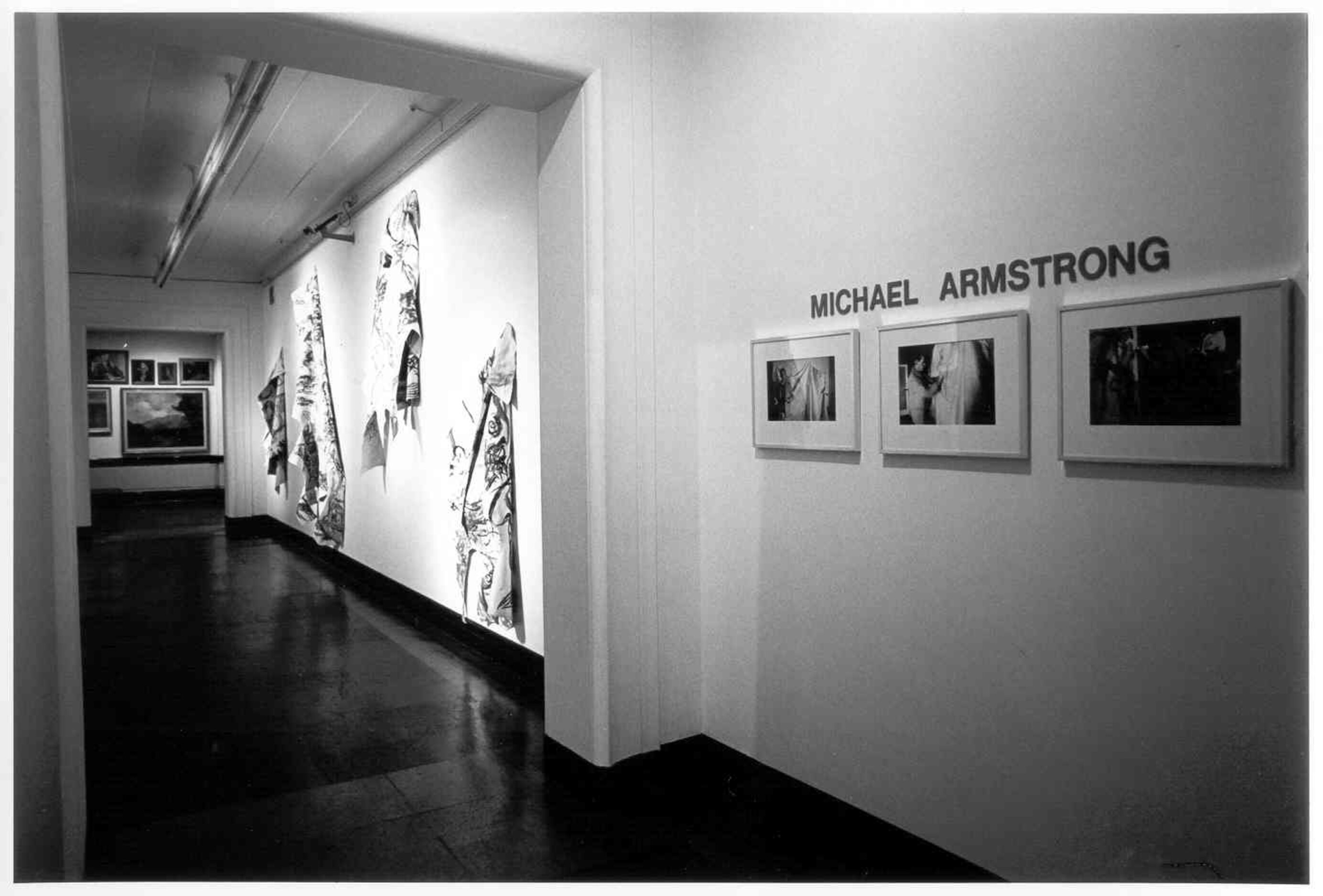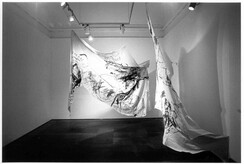This exhibition is now closed
Michael Armstrong
7 March –
14 April 1985

Installation view of the Michael Armstrong exhibition at the Robert McDougall Art Gallery.
Speaking on the works in this exhibition the artist writes: "There is a feeling that talking and writing about one's own art undermine the point and effect of the visual statement. However, I do not feel that I cheat on the perception of my own work by offering this small explanation of my philosophy. I do not see my art as being separate from my life, or that it is an activity that needs the protection of silence. I work through different levels of my conscious and unconscious varying between immediate hedonism and emotion to a delayed reaction and detached analysis of events and situations and of how to express these as ideas. To use the terminology, I work in an abstract expressionistic manner, the use of paint conveying the attitude to life. This is a recognisable pattern of activity, that can be interpreted and identified with. As a social mechanism, art may deal with a cultural identity - those who recognise the art form and appreciate it, can identify themselves as belonging to that society, or group. Its mechanism also identifies the viewer as an individual, by asking for personal reflection, self awareness, according to one's own reaction to a given work and one's ability to assess and accept that work.
I paint as part of my existence, and painting is for me a conditioned response to my existence. It is a learned behaviour, adapted by me to enable me to express ideas and feelings in my own terms, demanding that I understand or accept my own feelings, through which I can solve the problems it confronts me with, problems that demand decisions and creative answers. Therefore I am always being confronted with my own limitations, my own personality, that has to be adapted before constructive changes can be made. This is all only an oblique reference within the work, for it assumes a different interpretation according to the aesthetic of the viewer, the subjective and objective awareness and analysis of the view, and what they are prepared to put in and draw out of their perceptions."
"However to be more specific about the paintings: The canvas hangs loosely, has its own properties. It expresses itself. The edge, cut roughly, implies relationship both to the inner shape, and to the outer, surrounding space, that the canvas is part of a real cosmos not isolating the painting within rigid structuring. The paint is as an event, something that happened across the surface of the canvas, forms created and ideas expressed, the balance between order and chaos, in the human striving to create order out of chaos, figures and gestures overlap, replace each other, within an abstract chaotic energetic cosmos. The canvas continues on both sides, part of an infinity that folds over itself, revealing only part.
There are two poles in a sense, respect for the Object through awareness of its materials, and then the awareness of the human input, the social content and context "
('Michael Armstrong Artists Project', Bulletin, No.38, March/April 1985, p.1)
Location:
Robert McDougall Art Gallery - main gallery
Exhibition number: 333


